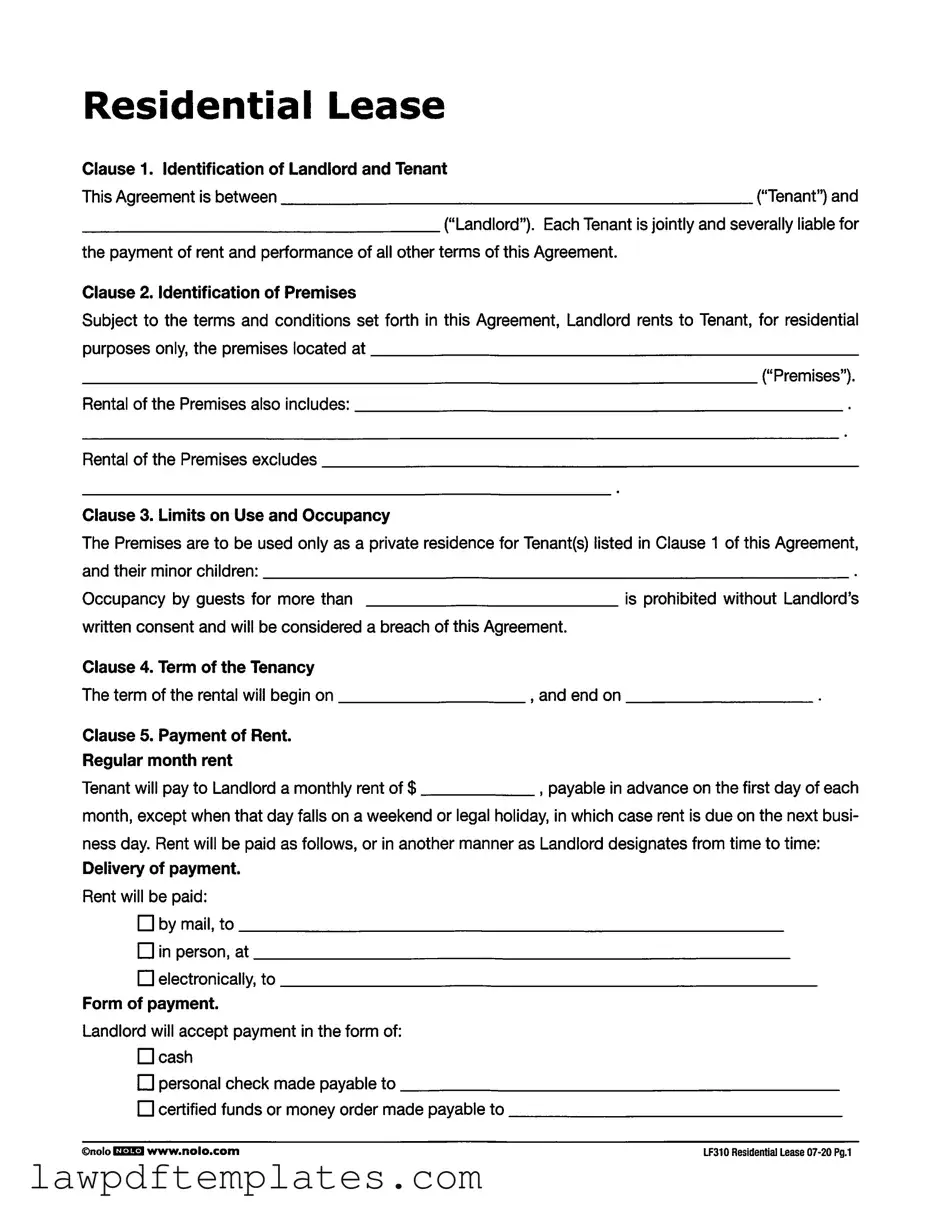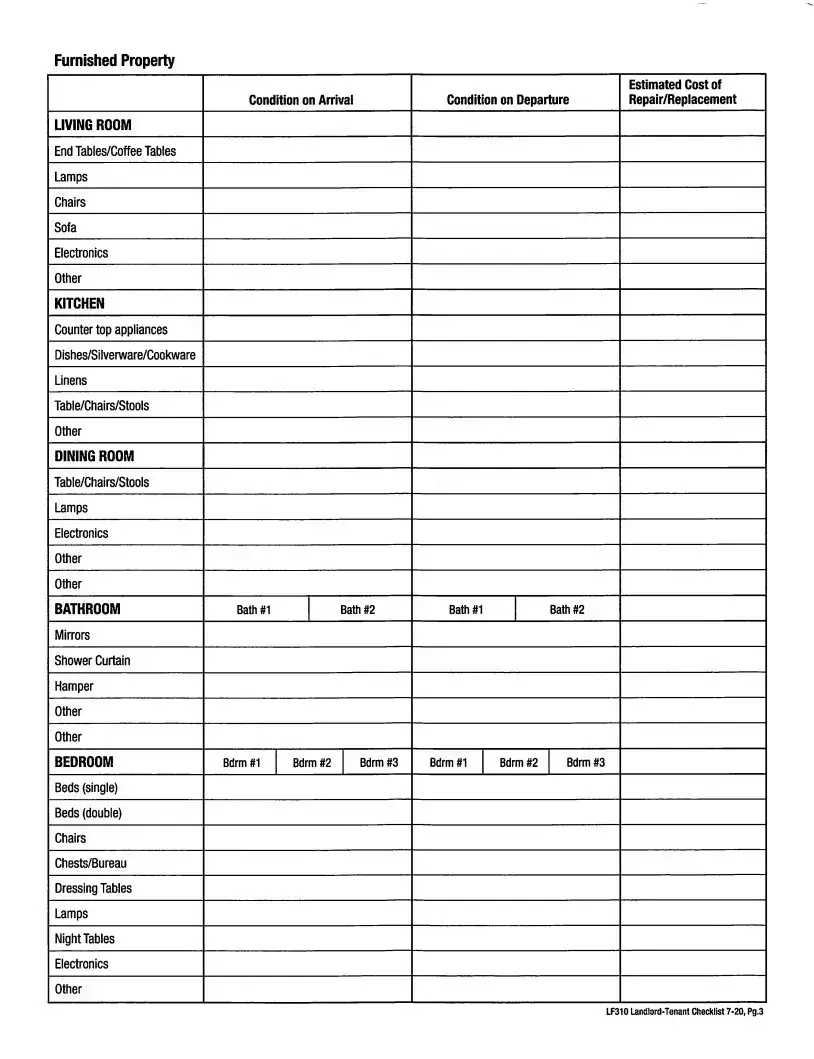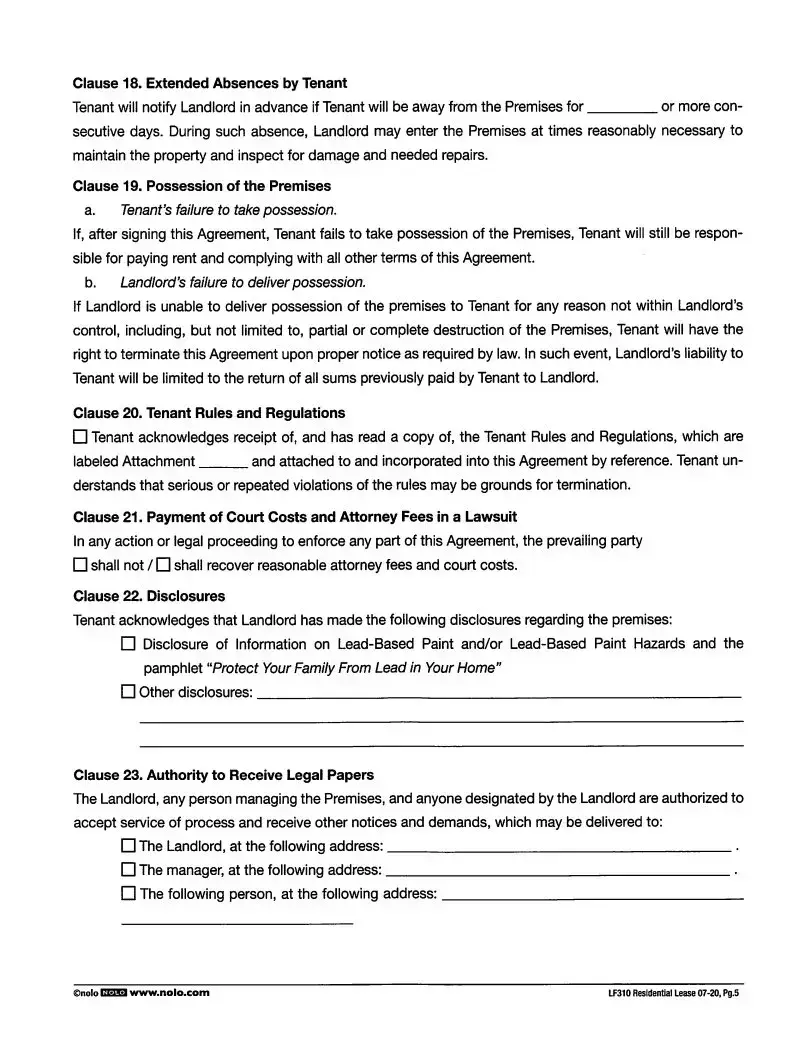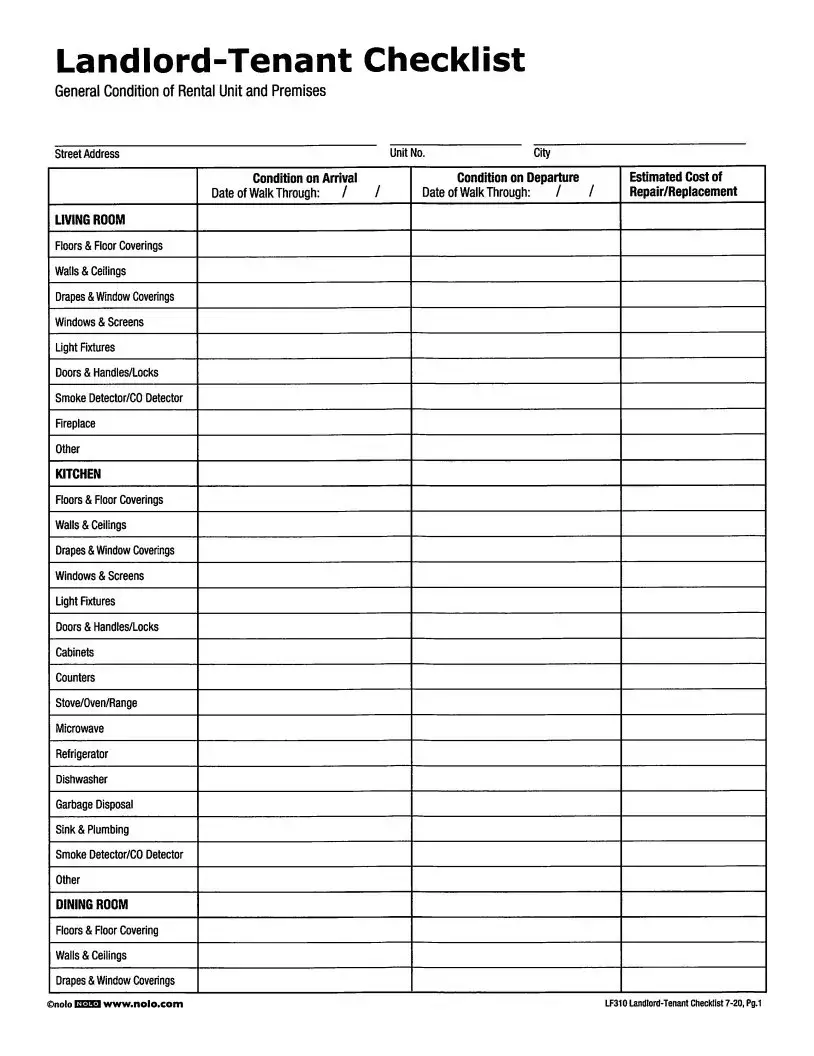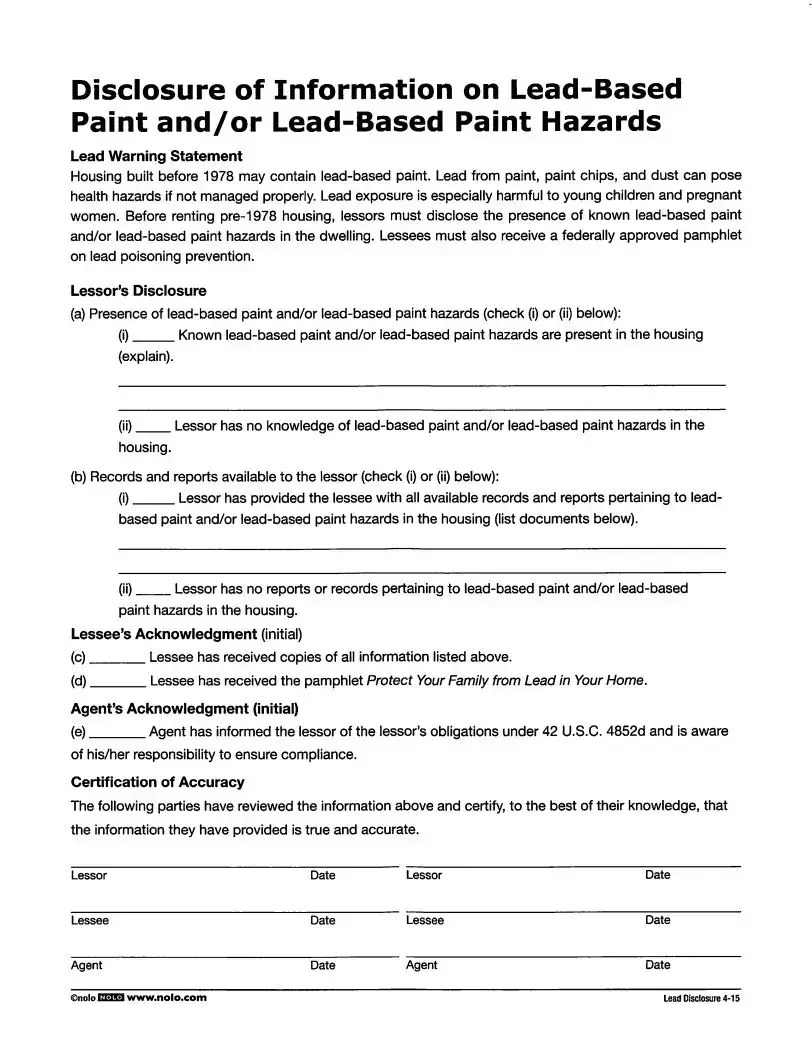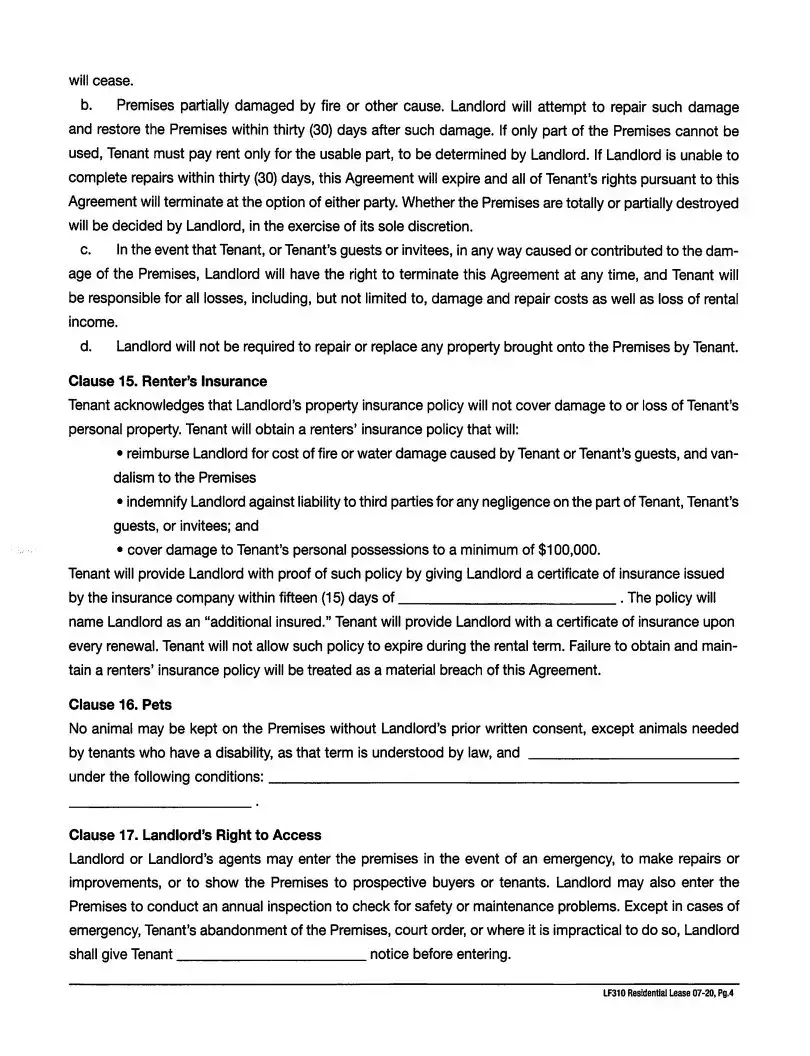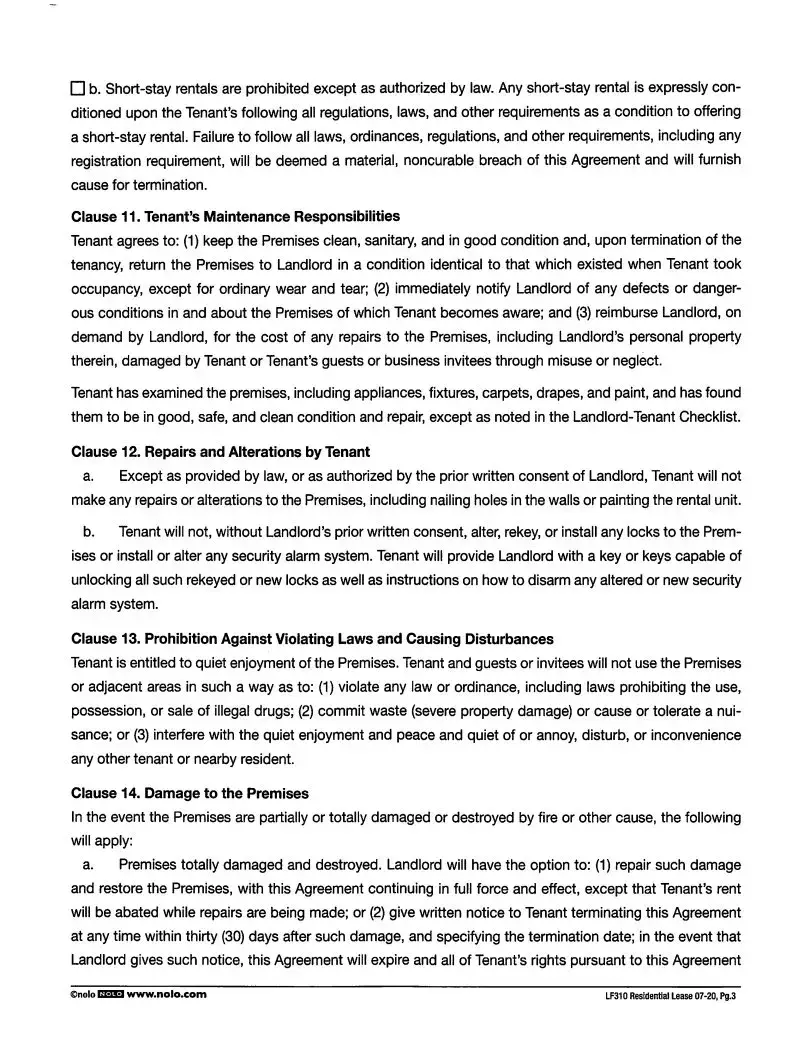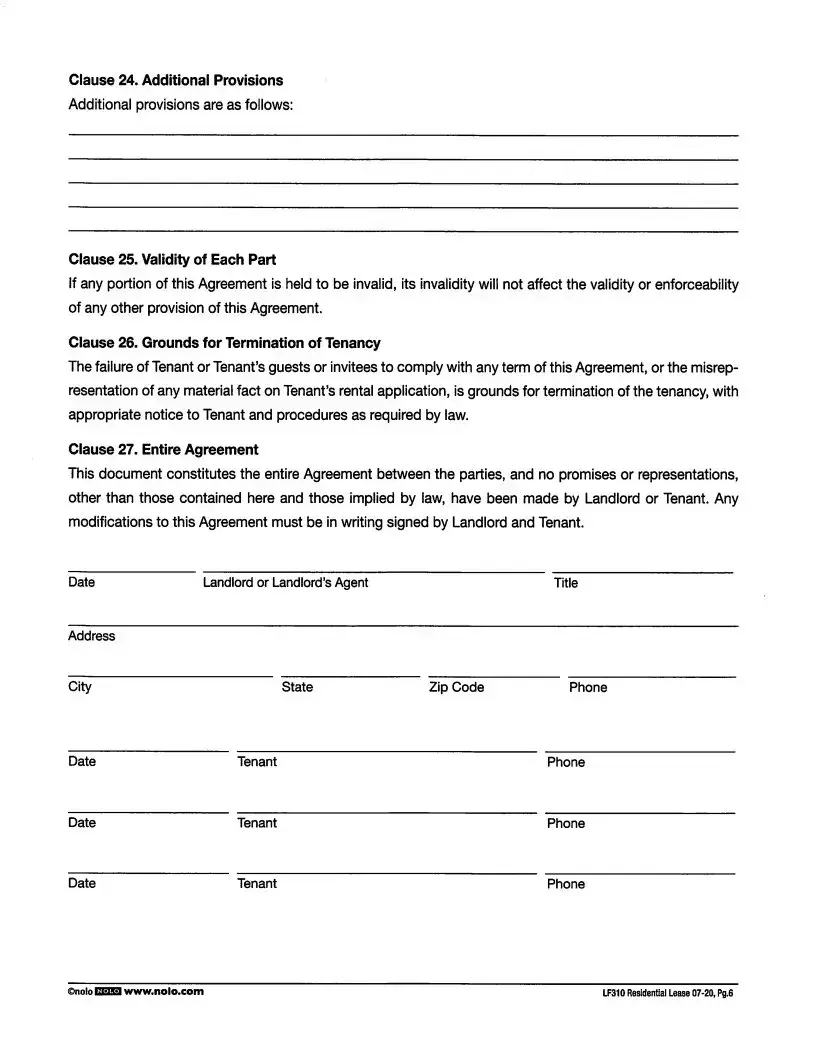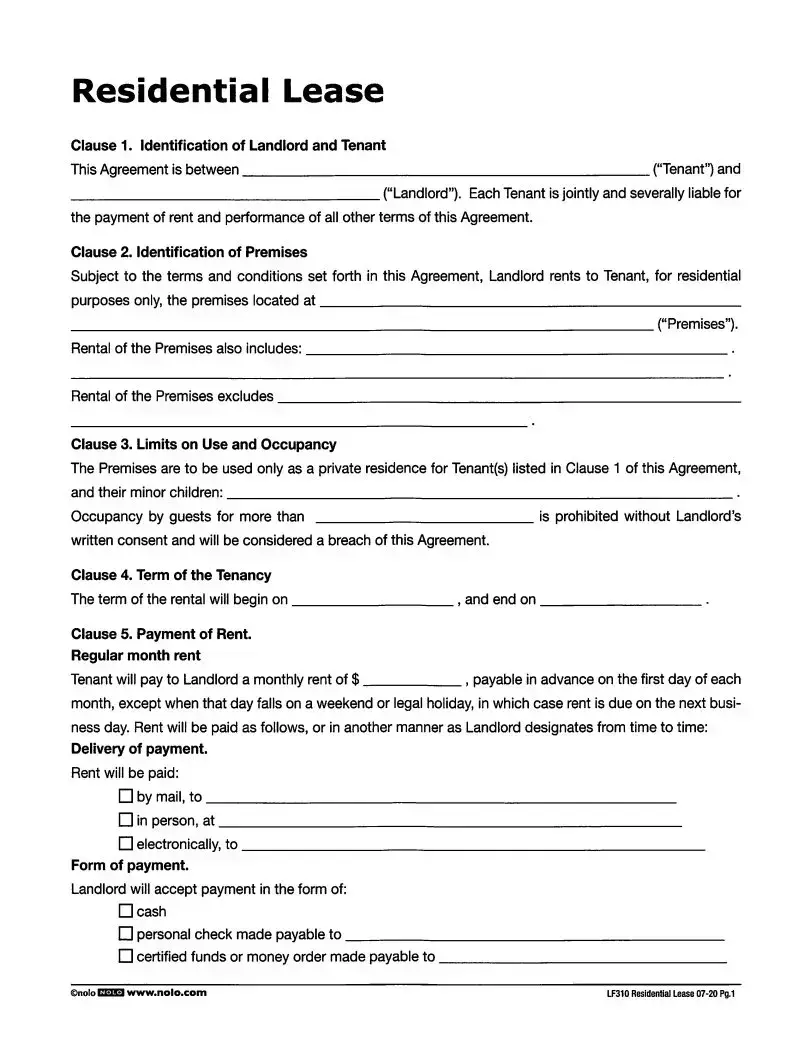When filling out the LF310 Residential Lease form, many individuals make common mistakes that can lead to misunderstandings or complications down the line. One frequent error is failing to clearly identify both the Landlord and the Tenant. It is crucial to provide full names and contact information. Leaving this section incomplete can create confusion about who is responsible for the lease.
Another common mistake is neglecting to specify the Premises address. This detail is essential for defining the rental property. Without a complete address, it may be difficult to enforce the terms of the lease or to establish the location of the rental agreement.
Many people also overlook the term of the tenancy. It is important to clearly state when the rental period begins and ends. Leaving this blank can lead to disputes about the duration of the lease, which could affect both the landlord's and tenant's rights.
In the payment section, tenants sometimes forget to specify the monthly rent amount or how it will be paid. This includes not detailing the payment method, such as whether it will be by check, cash, or electronic transfer. Incomplete payment information can result in late payments or misunderstandings about what is owed.
Another mistake is not addressing late charges. Tenants should pay close attention to the late charge provisions. If the terms are not filled out correctly, tenants might face unexpected fees for late rent payments, which could add unnecessary financial strain.
Additionally, some individuals do not properly complete the section regarding security deposits. It’s vital to note the exact amount and the conditions under which it can be withheld. Misunderstandings about the security deposit can lead to disputes when moving out.
Tenants often forget to specify which utilities they are responsible for paying. This can lead to confusion about who covers certain bills, resulting in potential conflicts between the landlord and tenant.
Another frequent oversight is related to subletting. Many tenants do not realize that they need written consent from the landlord before subletting or assigning the lease. Failing to address this can lead to serious consequences, including termination of the lease.
Lastly, people sometimes ignore the importance of reading the entire lease thoroughly before signing. Skimming through the document can result in missing crucial terms and conditions that could impact their living situation. Taking the time to review the lease ensures that both parties understand their rights and responsibilities.
